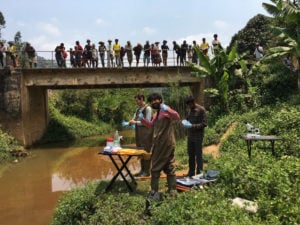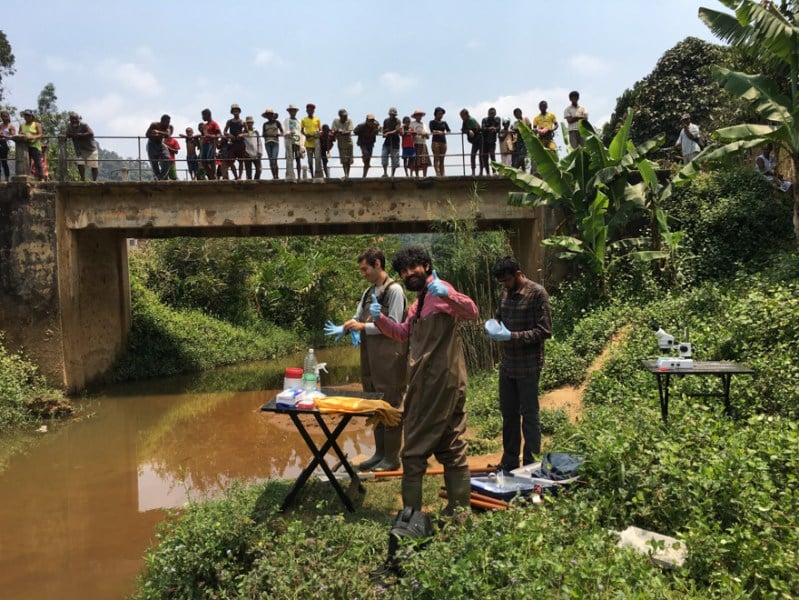Stanford bioengineers in the Prakash lab have used robotics to make new discoveries about the movement of parasites commonly found in swimming pools. Their research can contribute to the treatment of schistosomiasis, a neglected yet potentially fatal disease caused by tropical parasites.

Schistosomiasis is a waterborne disease that may produce one or more of the following symptoms: diarrhea, learning deficiencies, bladder cancer, organ damage or death. The infection occurs when cercaria, infectious forms of the blood fluke worm, move through contaminated water and pierce into the skin of a human host. Assistant professor of bioengineering Manu Prakash and his team are researching the biophysical swimming movements of the schistosomiasis larvae to understand how these parasites infect humans.
Deepak Krishnamurthy, a Ph.D. student who was lead author for the schistosomiasis study, explained that the team’s novel robotics approach allowed them to understand the parasite’s swimming motions.
Krishnamurthy said, “When I looked at this parasite, I was fascinated by the fact that it was swimming in a completely different way as compared to any other microorganism I knew about.”
Krishnamurthy explained that the parasites swim with a strange motion since their tails become perpendicular to their body, forming a shape like the letter “T.” The team of researchers is especially eager to understand the schistosomiasis transmission process in hopes of reducing the rate of schistosomiasis infection in the world population.
The researchers observed the minute movements of live parasite larvae and then compiled multiple mathematical models depicting how the parasite’s movements changed the surrounding fluid. The mathematical models were vital in revealing information that would have else been missed by the human eye, even with high-speed microscopy. The models detailed the exact kinematics of the parasite’s head, body and tail rotations and acceleration of movement. With the kinematic information, the team was able to form robotic models to engineer a scaled-up robotic swimmer.
Currently, the researchers continue to experiment and further analyze the biophysics of the parasite’s swimming motions with robotic swimmers.
“On the face of it,” said Krishnamurthy, “it looks like I’m trying to make a robot that swims like a parasite, but the truth is that it was the exact opposite: I was building a robot to actually understand how the biological parasite swims.”
Contact Kim Ngo at kimanh ‘at’ stanford.edu.
